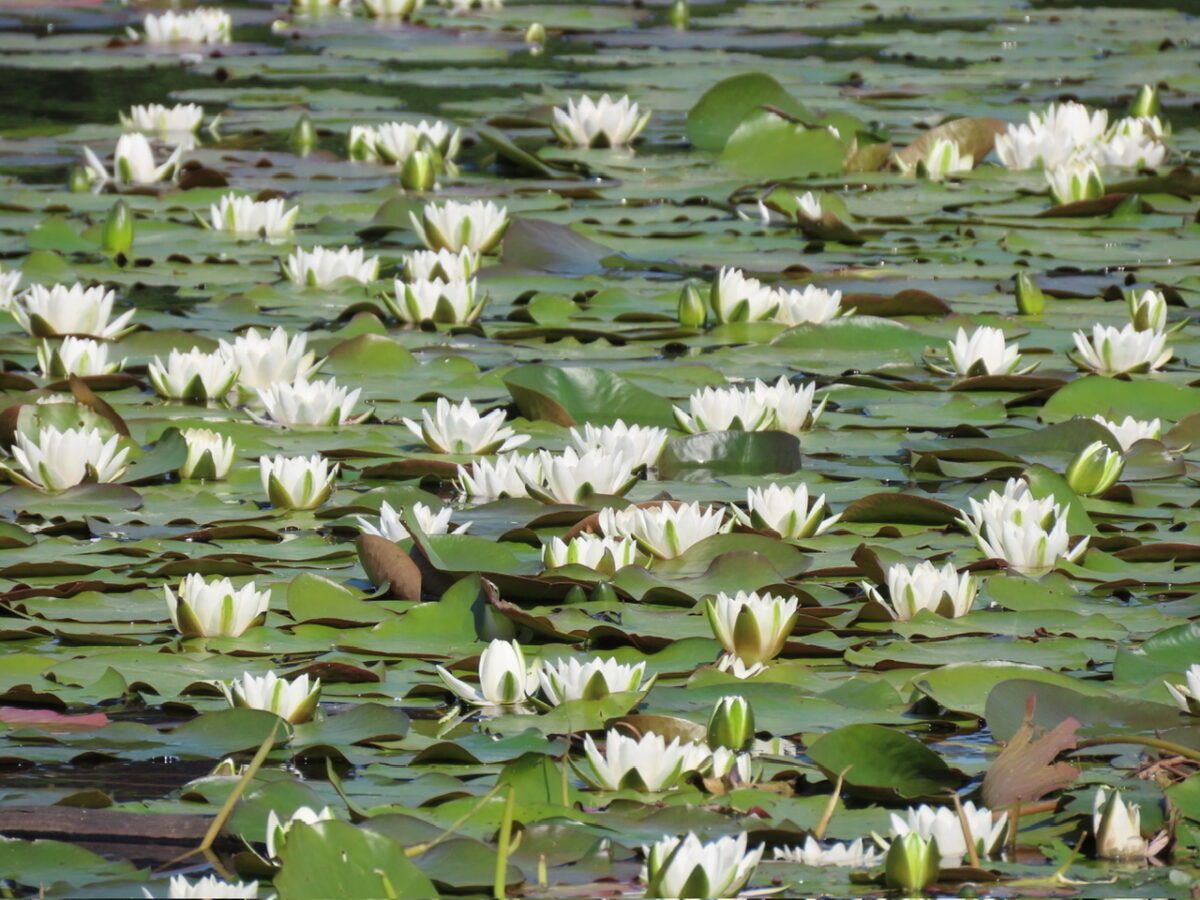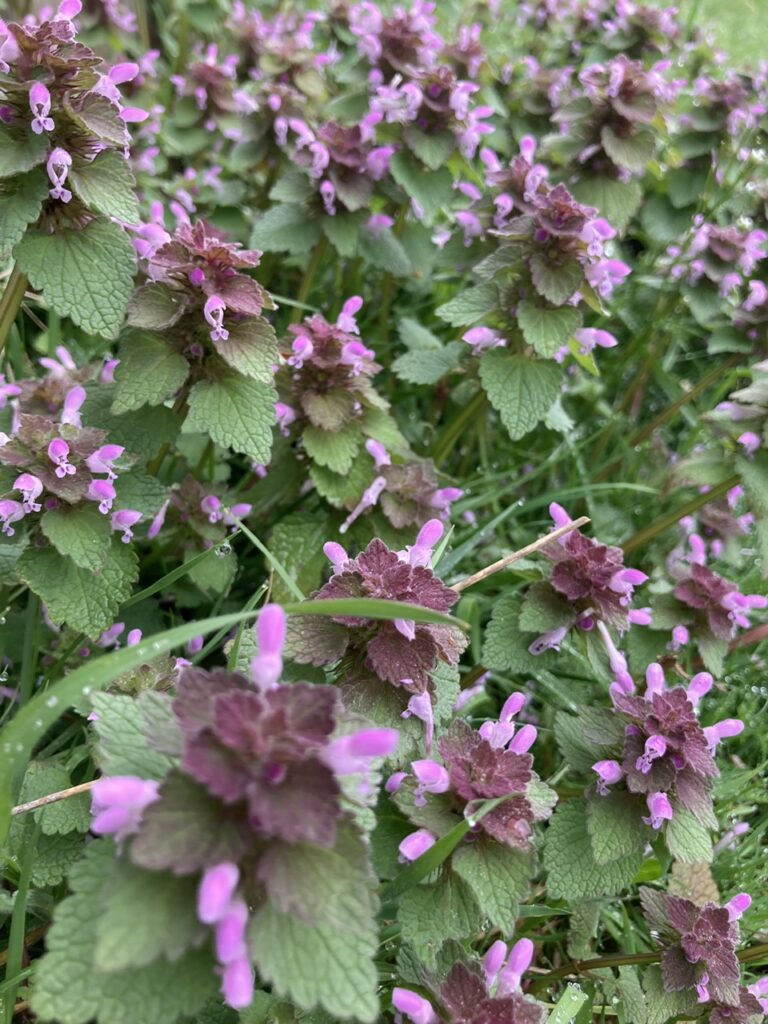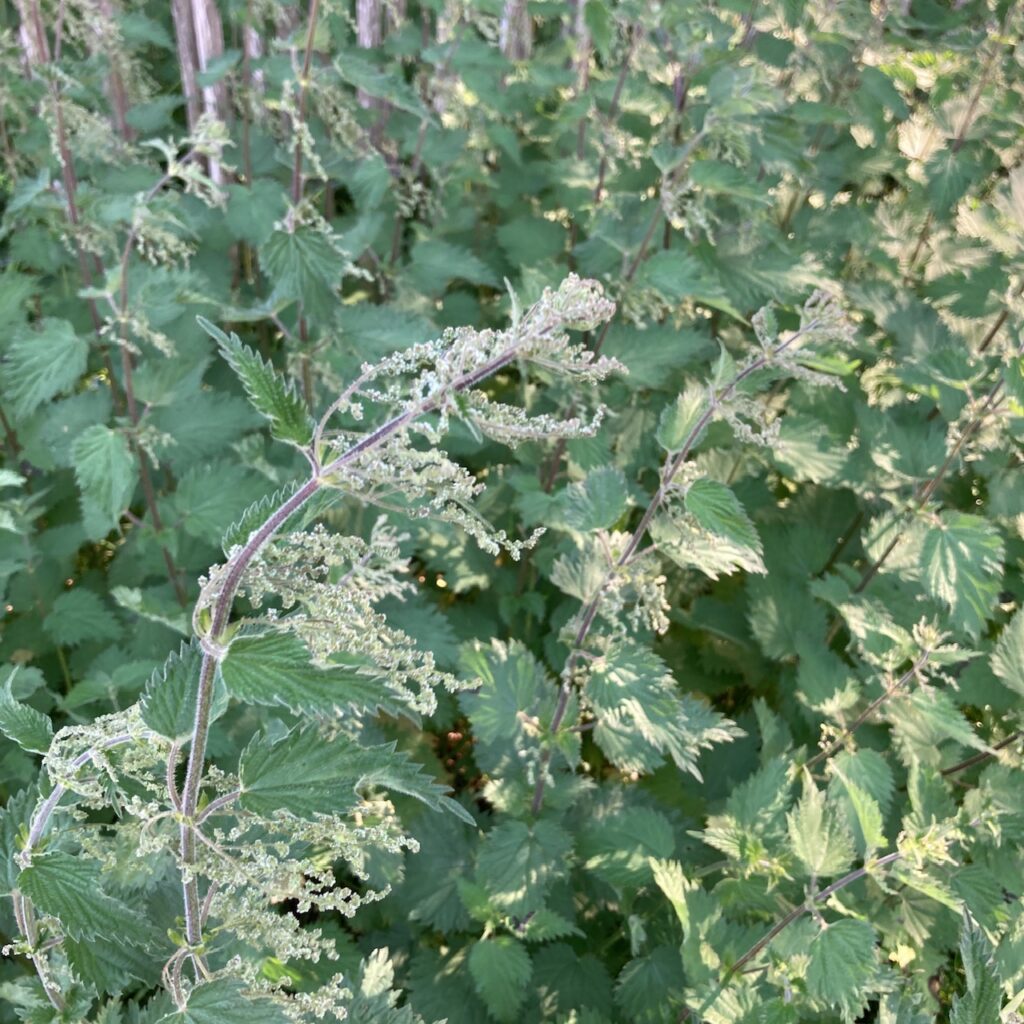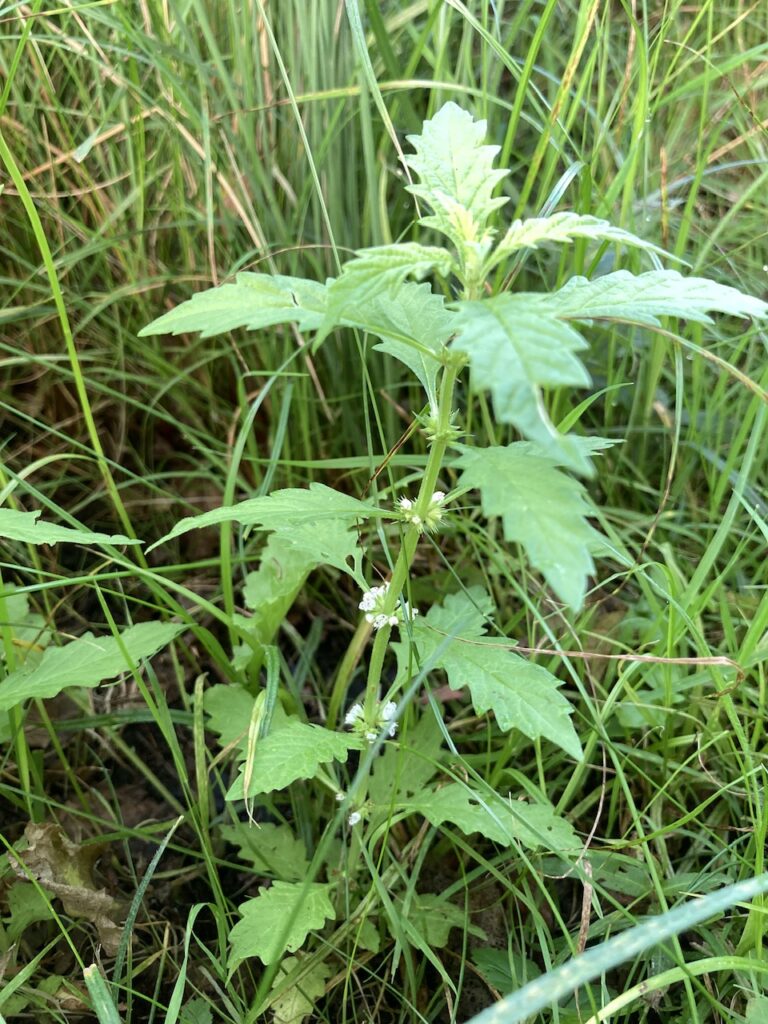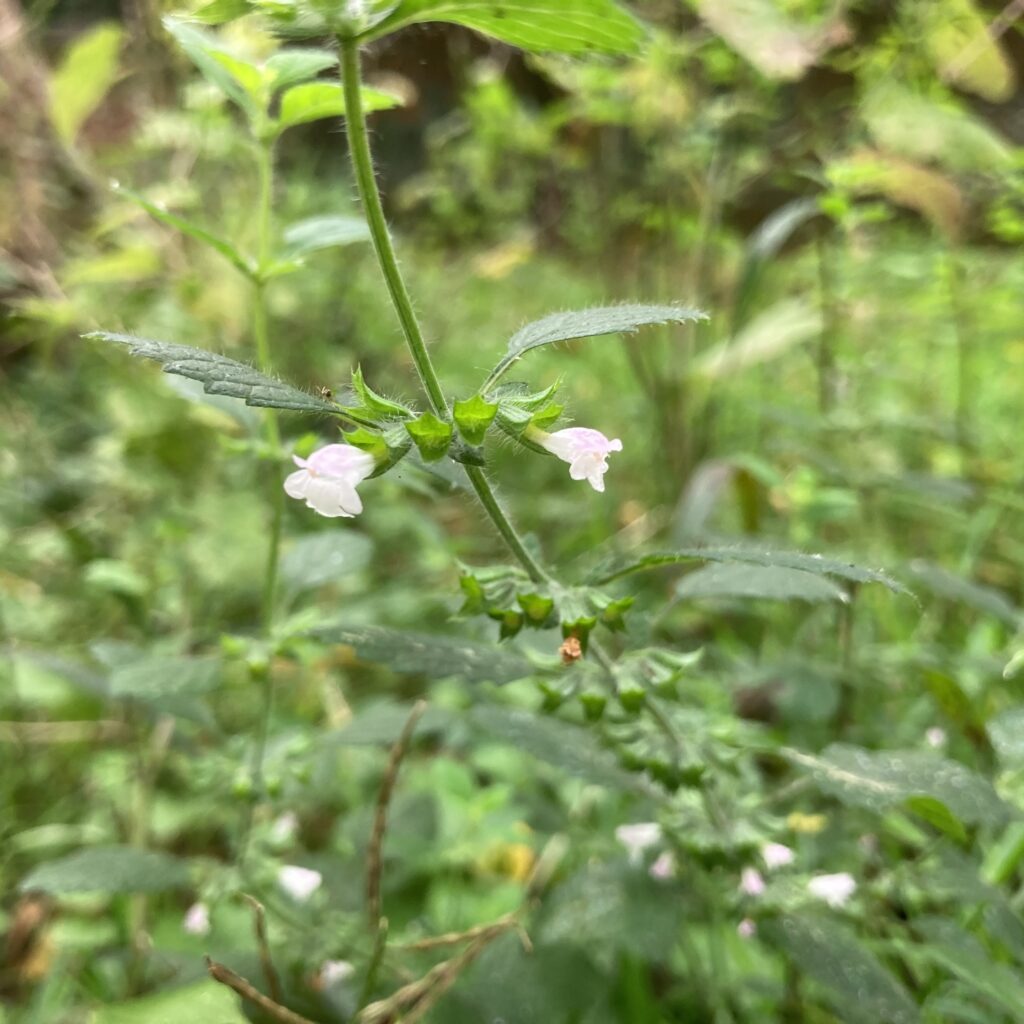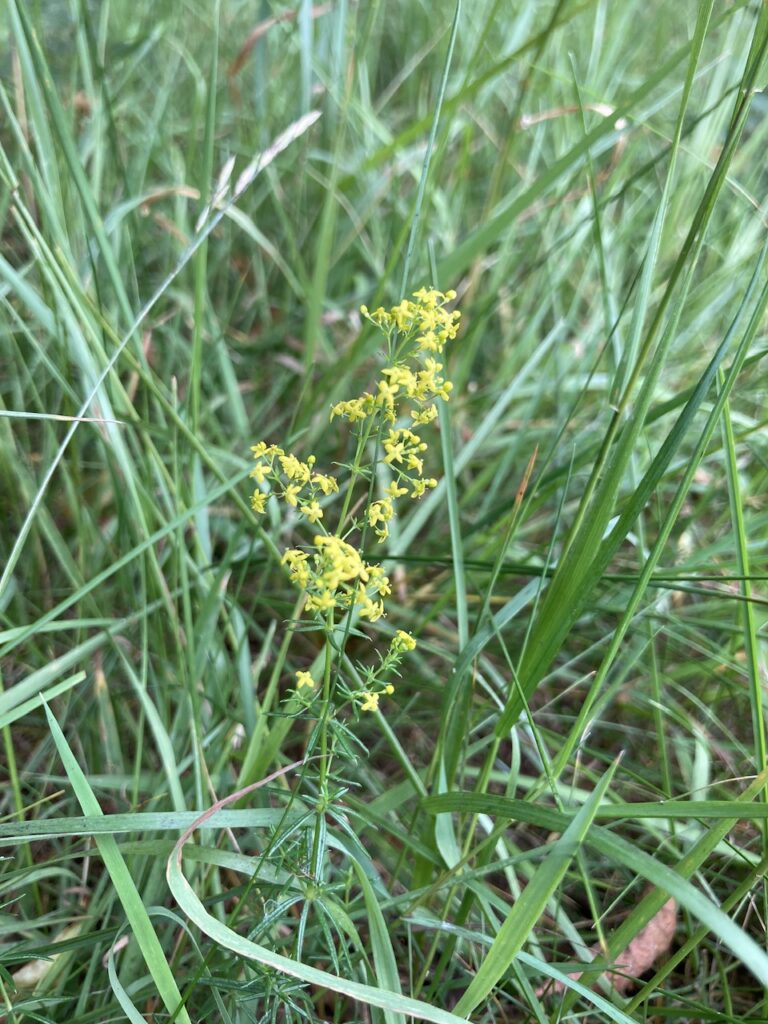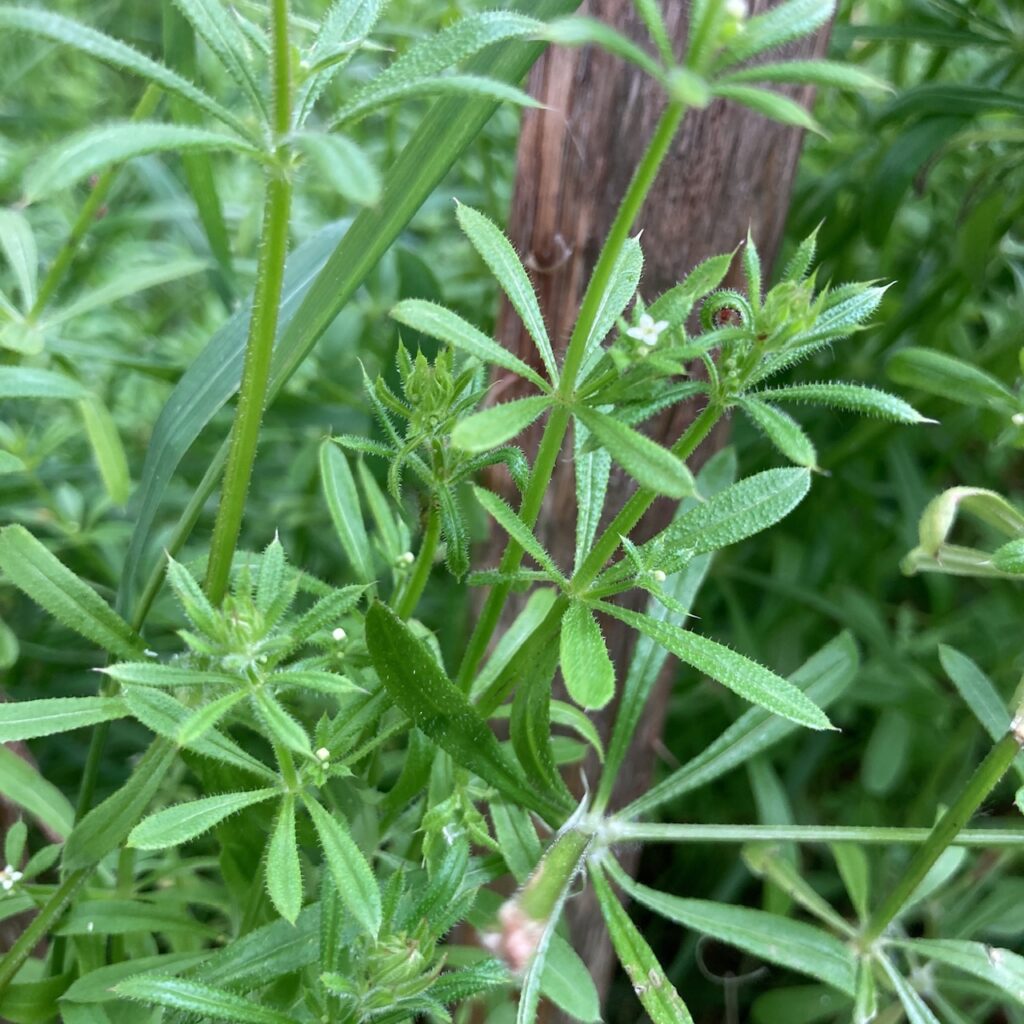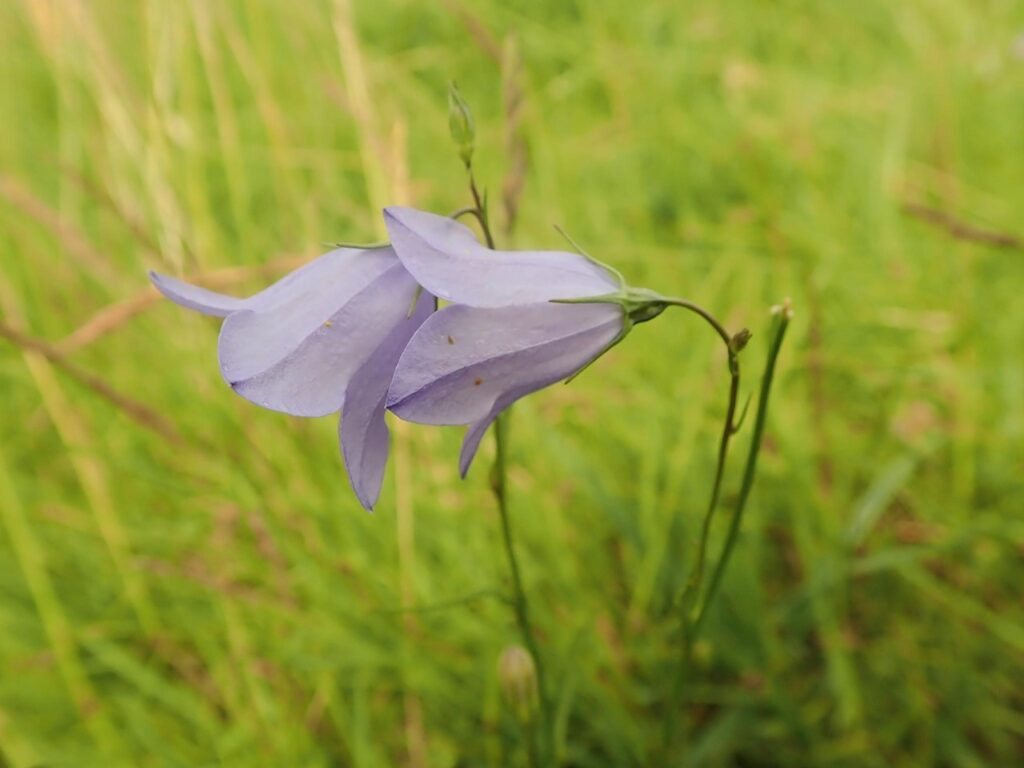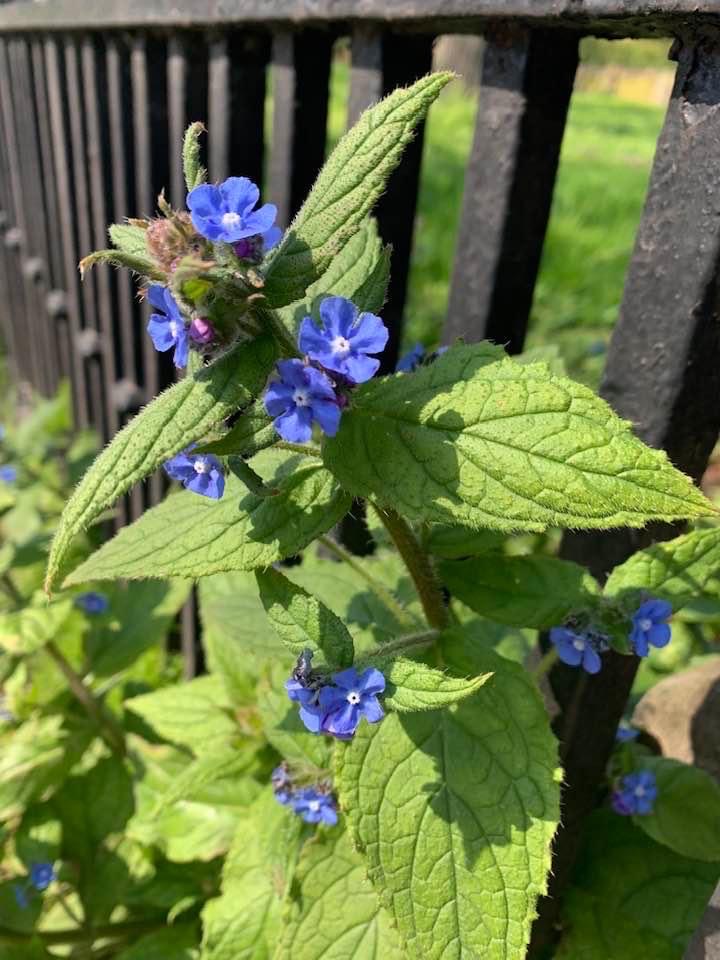Asterids are the largest group of flowering plants, with more than 80,000 species, about a third of the total flowering plant species.
We have more Asterids on the Carnations, Asters and Knotweeds page.
Carrot Family
Hemlock

Conium maculatum.
Hemlock is a tall, poisonous plant with hollow stems and fern-like leaves. It has a strong, musty odour when crushed. The flowers are tiny, white, and arranged in small, umbrella-shaped clusters.
Cow Parsley

Anthriscus sylvestris
Cow Parsley is a delicate plant with white flowers that grow in fields. It has feathery leaves and tall stems. But be cautious, as its sap can cause a skin rash called Cow Parsley Dermatitis if touched. Enjoy its beauty from a distance and avoid touching it!
Fool’s-water-cress

Apium nodiflorum
Fool’s-water-cress, also known as marshwort or poor man’s watercress, is a flowering plant that closely resembles true watercress.
While it may look like watercress, fool’s-watercress is not edible and can be harmful if consumed. The easiest way to distinguish between the two is by smell.
Lesser Water-parsnip
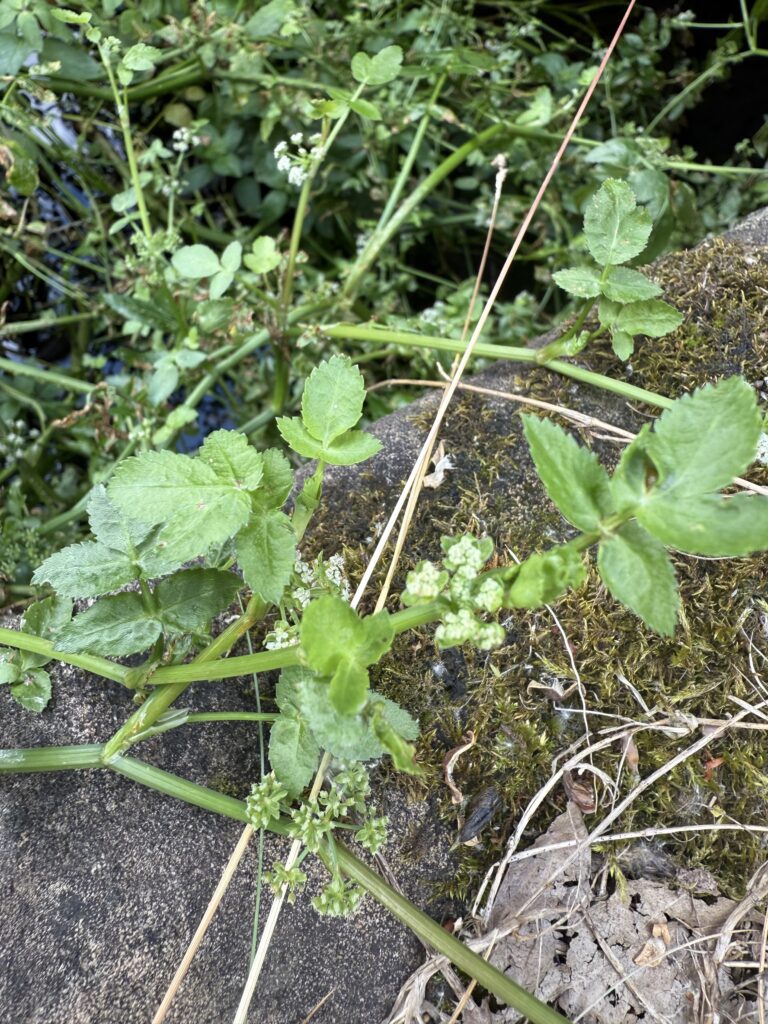
Berula erecta
Lesser water-parsnip is a perennial aquatic plant found in shallow, clear, flowing water, and characterised by umbrella-like white flower heads and leaves that smell of parsnip or carrot when crushed.
Common Hogweed

Heracleum sphondylium.
Common hogweed is a biennial plant that can grow up to 2 meters tall. It has a hollow, ridged stem with bristly hairs, and large leaves that are once or twice pinnate, hairy and serrated. The flowers are pinkish or white, arranged in umbels usually less than 30 cm in diameter with 15 to 30 rays.
Mint and Nettle Families
White Dead-nettle

Lamium album.
A square stem, white flowers, and heart-shaped leaves with serrated edges.
Causes a mild sting in the upper side of the leaf is touched.
Hedge Woundwort

Stachys sylvatica.
Hedge Woundwort, also known as Hedge Nettle, is a perennial plant that grows to 80 cm tall.
It has hairy stems that bear whorls of ‘hooded’, magenta-pink flowers with white markings. Its hairy leaves are dark green, heart-shaped and toothed. The plant has a distinctive unpleasant smell when crushed, and although similar in looks to a nettle, it does not sting.
Selfheal
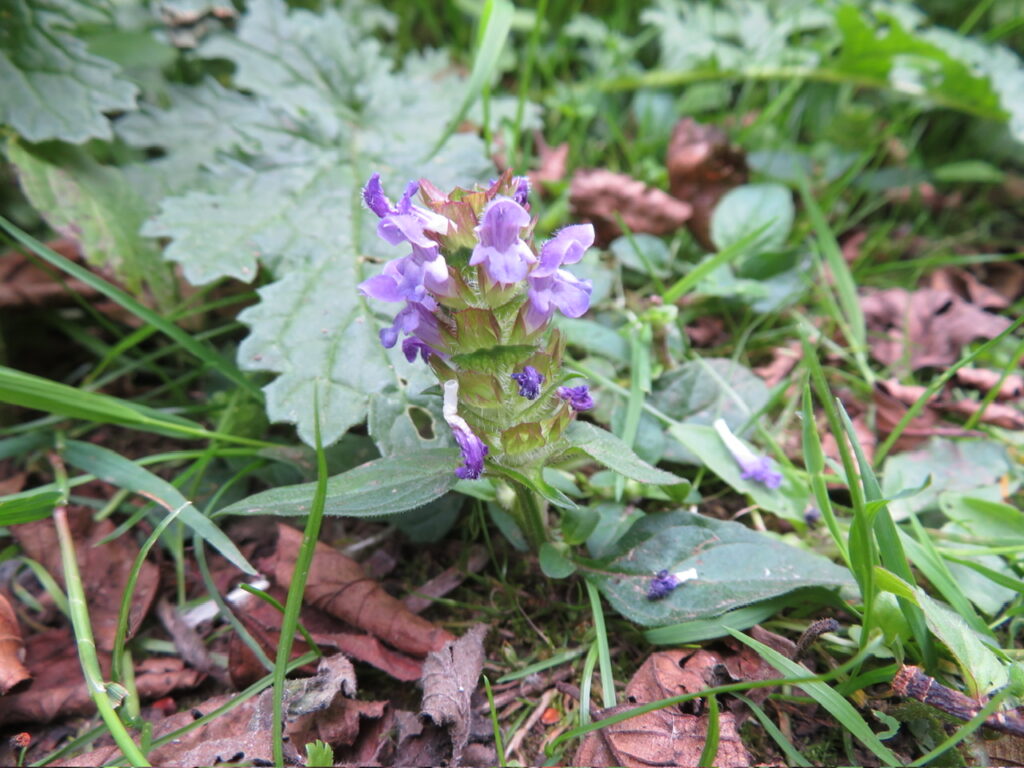
Prunella vulgaris.
Selfheal is a herbaceous plant with a square stem, small lanceolate leaves, and purple or blue flowers arranged in a terminal spike.
Figwort & Nightshade Families
Black Nightshade

Solanum nigrum.
Black nightshade has dark green leaves, white flowers, and black berries. Common in the South, but less common in the East Midlands.
Bittersweet

Solanum dulcamara.
Bittersweet (also known as Woody Nightshade) is a perennial climbing vine that can grow up to 3 meters tall. It has purple and yellow flowers that bloom from May to September, and bright red berries that ripen in the fall. The plant is poisonous, containing the toxin solanine.
Brooklime

Veronica beccabunga.
Brooklime is a fast-growing species that produces glossy green trailing foliage and tiny blue flowers all summer long. The waxy leaves are evergreen and last through into the winter, surviving frosts and ice and making it one of the few native plants to give winter interest to ponds.
Water Figwort

Scrophularia auriculata.
Water figwort is a tall, square-stemmed wildflower with maroon flowers that thrives in wet areas and attracts bees and butterflies.
Foxglove

Digitalis purpurea.
Foxglove is a biennial or perennial flowering plant. It has tall spires of tubular flowers in shades of pink, purple, or white. Foxglove is found in woodland areas and gardens. While it is poisonous if ingested, it contains compounds used in medicine to treat heart conditions.
Bedstraw
Heath Bedstraw

Galium saxatile.
Heath Bedstraw is a low-growing perennial plant with square stems and whorls of 6-8 sharp, forward-facing leaves. It has small, white four-petaled flowers that give off a sickly smell.
More…
Ivy Leaf-Cyclomen
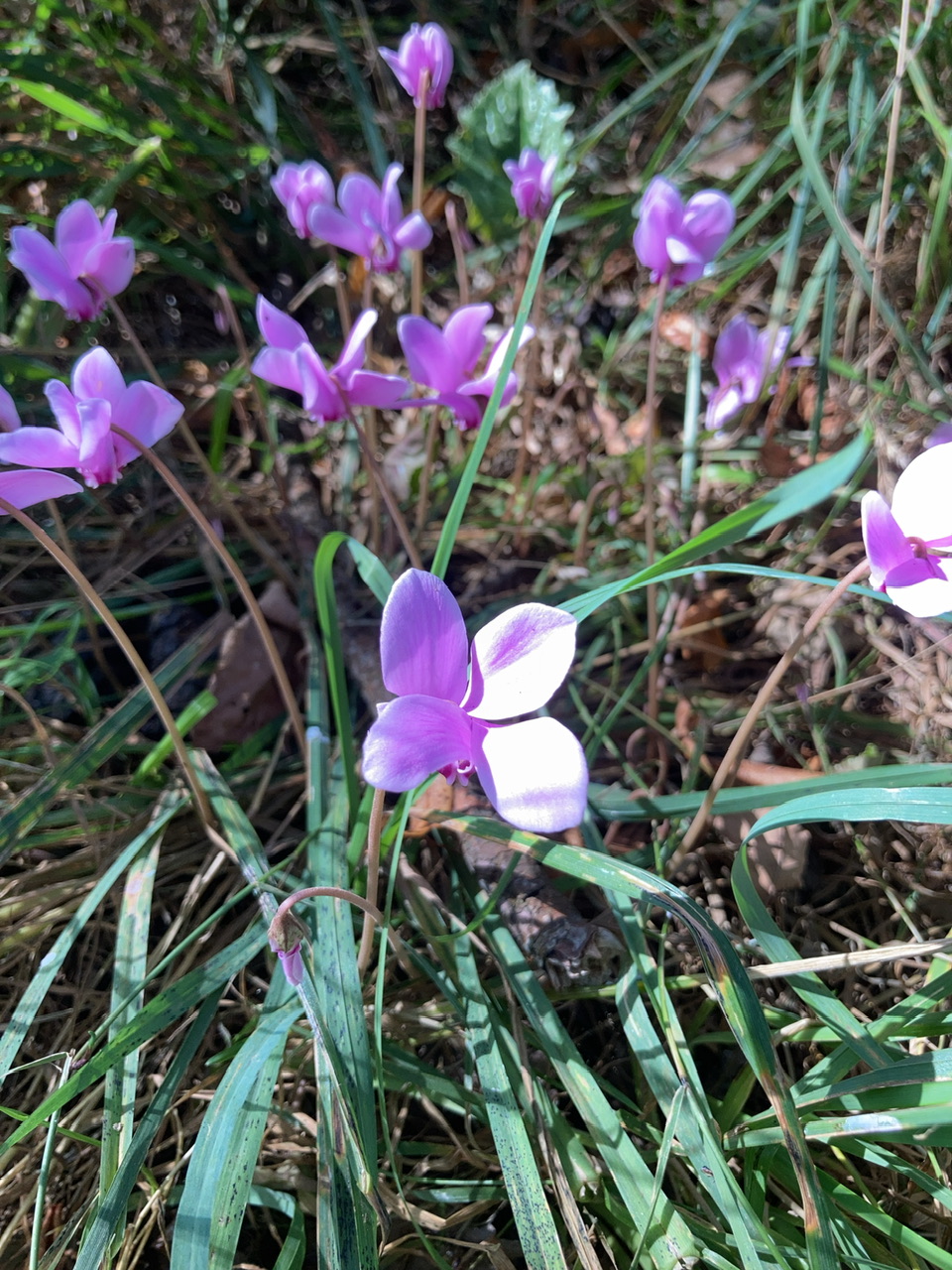
Cyclamen hederifolium.
Primose family.
It has delicate, upturned petals in pink, purple, or white.
Its leaves look like ivy leaves.
It blooms in autumn and loves shady places.
Hedge Bindweed
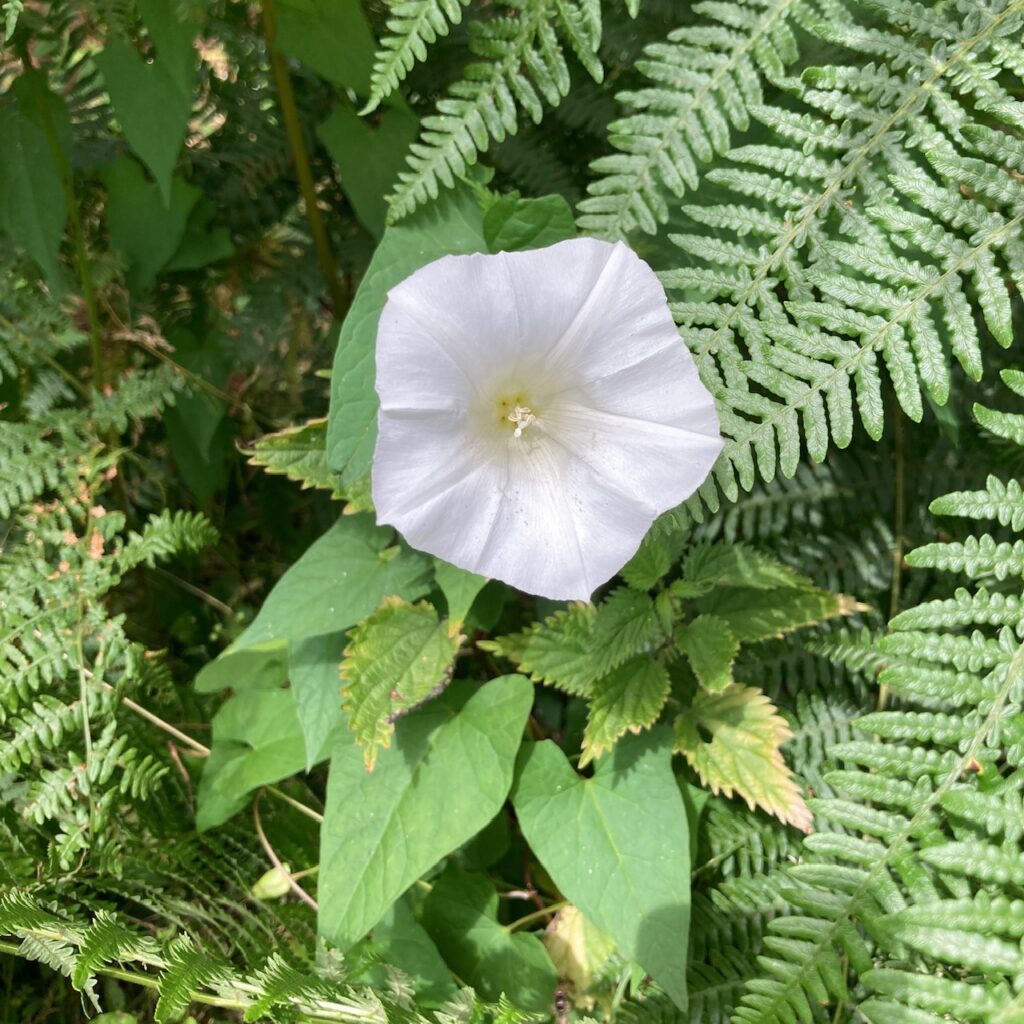
Calystegia sepium.
Bindweed family.
Hedge bindweed is a perennial herbaceous vine that can grow up to 4 meters long. It has smooth, light green stems that twine around other plants for support. The leaves are alternate, triangular, and have deeply lobed bases. The flowers are white or pink trumpets that bloom from late spring to early summer. Hedge bindweed is a common weed in many parts of the world and can be difficult to control.
Photographs used on these Wildflower pages were taken in Wollaton Park and are reproduced with the original artist’s permission.
Credits: Colin Robbins, Gila Taylor, Chris Golightly, Kiyoko Naish, Michael Hayes, Unni Williams, Kyle Heesom, Wendy Martin.
Copyright © for each picture remains with the original artist, who is duly acknowledged and credited for each image.

